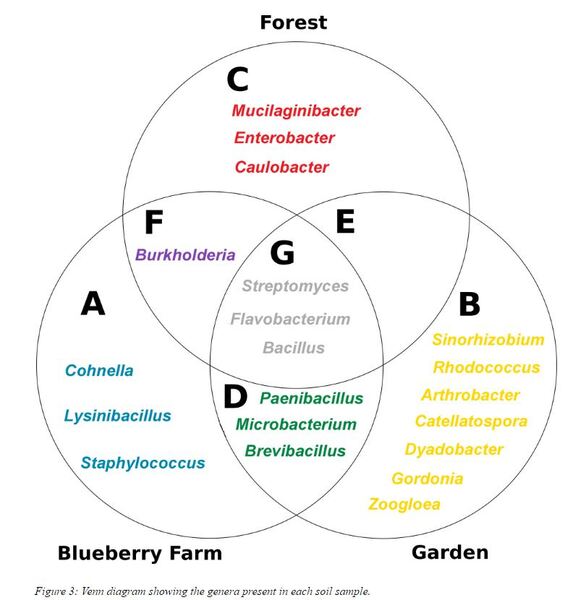Bacterial Richness of Soil Samples from Southern New Hampshire
(1) Phillips Exeter Academy, Exeter, New Hampshire
* These authors made equal contributions
https://doi.org/10.59720/16-017
As DNA sequencing has become more popular, knowledge about the soil microbiome has expanded considerably. This technological advancement has led to a greatly increased understanding about the role of bacteria in soil. Previous studies have shown that, while geographic proximity plays a minor role in determining species richness (1), there exists a direct correlation between microbial diversity and both soil pH (1) and plant variety (2). In this paper, we examine the microbial content of soil samples taken from three locations in southern New Hampshire with varying pH and plant composition. We found that a minority of genera were shared between all three sites, and most genera were present in only one site, confirming the theory that soil microbes are site-dependent. The three shared, genera as well as the genera unique to specific samples, were paraphyletic. Our data suggests that pH is not the only factor affecting microbial composition, thereby confirming previous research and contributing to the understanding of the interaction between microbial communities and soil. While pH may affect microbial species richness (1), our results demonstrate that other factors, such as soil management techniques, play a larger role in the distribution of genera between different soil sites.